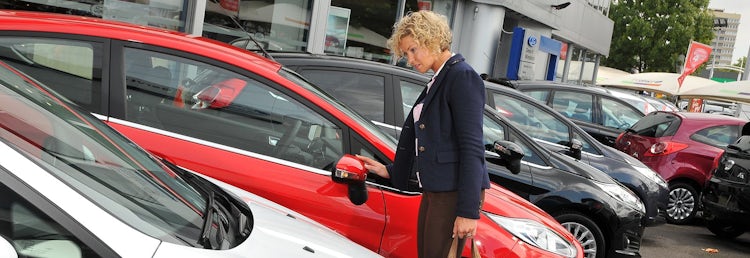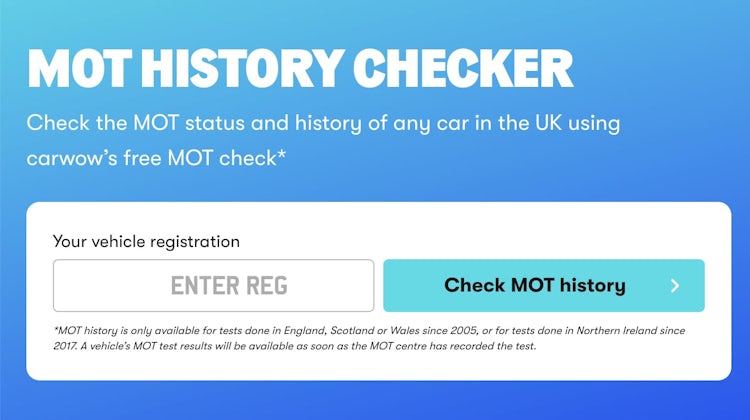Used Ford Focus Estate cars for sale
Find the right second hand Ford Focus Estate for you through our network of trusted dealers across the UK
Looking to buy a used Ford Focus Estate? Get a full car history check
How buying a used car through carwow works
Find a car
Use carwow to browse and compare used vehicles, advertised by a network of trusted dealers. You can search by make and model, or apply filters to find the perfect car for you.
Contact the dealer
Once you’ve found a car you’d like to buy, you can contact the dealer to arrange the next steps, whether that’s asking a question or taking it for a test drive.
Buy the car
When you’re happy to buy, you can do so at a fixed price, safe in the knowledge all models sold through carwow are mechanically checked and come with a warranty.
Used Ford Focus Estate pros and cons
Sell your car for what it's really worth
The free, easy way to get 5,500+ dealers all over the UK bidding on your car
Is a second hand Ford Focus Estate a good car?
The Ford Focus Estate has been a hugely familiar site on Britain’s roads ever since the original Focus was launched way back in 1998. Sadly, it won’t be around for much longer, as Ford is phasing out the Focus to concentrate on an all-SUV lineup, but at least that means it’s a solid second-hand buy.
It’s best to think of the Focus Estate as being a bit like AC/DC — possibly outdated now, and usurped by more fashionable competition, but an old pro, still capable of turning in a fantastic performance.
The current Focus Estate has been on sale since 2018, and in 2022 was given a significant update that saw it gain a bigger grille, slimmer headlights, and an updated interior with a bigger touchscreen running more up to date software.
That update definitely improved the look of the Focus’ cabin, which has long been a weak point, especially compared to alternatives such as the Volkswagen Golf, Skoda Octavia, and Peugeot 308 SW. The Focus’ dashboard looks rather cheap in comparison, but there’s actually nothing wrong with the way it’s bolted together.
The Ford Focus Estate is a roomy car, too — there’s ample space in the back seat even for taller passengers, while the boot can hold 575 litres of cargo up to the luggage cover, or 1,653 litres if you fold down the back seats. However, that’s less space than you’d find in a Skoda Octavia Estate, which beats the Focus’ boot volume by almost 40 litres, and which has more space in its back seats too. Even so, the Focus Estate’s boot is still usefully large, and actually holds more than the bigger Kuga SUV, which kind of undermines the point of buying an SUV in the first place.
More recently, Ford has reduced the Focus Estate’s engine lineup to a single petrol option — the 1.0-litre EcoBoost engine with either 125hp or 155hp — and the high-performance 280hp sporty ST model. Previously, though, you could pick from a broader range of engines, including diesel options, so if you’re prepared to buy a slightly older model there’s a bit more choice on offer.
Both of the EcoBoost engines are economical — 45mpg is easy — but if you get an older 1.5 EcoBlue diesel then 60mpg is possible. Buying an older diesel, or a more current ST, would also get you away from the reliability issues of the 1.0-litre EcoBoost engine.
A six-speed manual gearbox was always standard, with the choice of a seven-speed automatic, but some versions with the auto ‘box use a Jaguar-style rotary gear selector which can be fiddly to use when you’re trying to pull off a three-point turn.
You’ll forgive foibles like that the first time you come to a corner, though. The Focus Estate may be a roomy family car, but it gets around a twisty road as if it’s a sports car in disguise, with sharp steering and more than a little entertainment for a keen driver. If you need to tackle unmade roads or poor surfaces, there is the option of a Focus Estate Active X which has slightly raised suspension and plastic guards for the bumpers and wheel arches, but there’s no four-wheel drive option. The ST model is the most fun to drive, with a brilliant balance of sportiness and comfort, and there was, briefly, a luxurious Vignale model which made no financial sense new, but which makes a great and highly-specified second hand buy.
If you’re filling the Focus Estate with family members, it’s good to know that it’s a safe car, holding a full five-star rating from independent safety experts Euro NCAP. While it’s an ageing model now, and beset by younger competition, the Focus Estate is well worth a look if you need a practical family car that doesn’t leave a keen driver out in the cold.
What to look for when buying a used Ford Focus Estate
The 1.0-litre EcoBoost engine has developed an unhappy reputation for engine failures, thanks in no small part to using a ‘wet belt’ cambelt which has to pass through the engine’s oil supply. This does two things — it weakens the belt over time, and it means that fragments of the belt can clog up the oil system, both of which can lead to engine failure. Being over-attentive with the cambelt changes and oil changes can keep the worst of this at bay, but you can avoid it entirely by going for an older diesel-engined model, or the high-performance ST.
In the most recent Driver Power ownership survey, Ford had a very poor result, finishing third from bottom, in 30th position, in the best brands to own list. That said, 20% of owners reported issues with their cars which is not an overly-large figure, so there’s some hope in that. The Focus finishes in 47th place in the top 50 models to own list though, with an owners score of 82.8%, and concerns raised about its reliability and quality.
Ford Focus Estate FAQs
Used car buying guides
Popular used car models
- Used Audi A1 Sportback
- Used Citroen C5 Aircross
- Used Fiat 500
- Used Ford Fiesta
- Used Hyundai i10
- Used Hyundai Ioniq 5
- Used Jaguar E-PACE
- Used Jaguar F-PACE
- Used Jaguar I-PACE
- Used Kia Ceed
- Used Kia Niro
- Used Kia Picanto
- Used Kia XCeed
- Used Land Rover Defender 110
- Used Mazda CX-5
- Used Mercedes-Benz A-Class
- Used Mercedes-Benz CLA
- Used Mercedes-Benz GLA
- Used MG MG4 EV
- Used MG ZS
- Used Peugeot 208
- Used Peugeot 3008
- Used Polestar 2
- Used Renault Clio
- Used SEAT Ateca
- Used SEAT Ibiza
- Used SEAT Leon
- Used Skoda Kodiaq
- Used Toyota Aygo X
- Used Toyota Yaris Cross
- Used Vauxhall Corsa
- Used Vauxhall Grandland X
- Used Vauxhall Mokka
- Used Volkswagen T-Cross
- Used Volkswagen Tiguan
* In line with the Consumer Rights Act 2015










